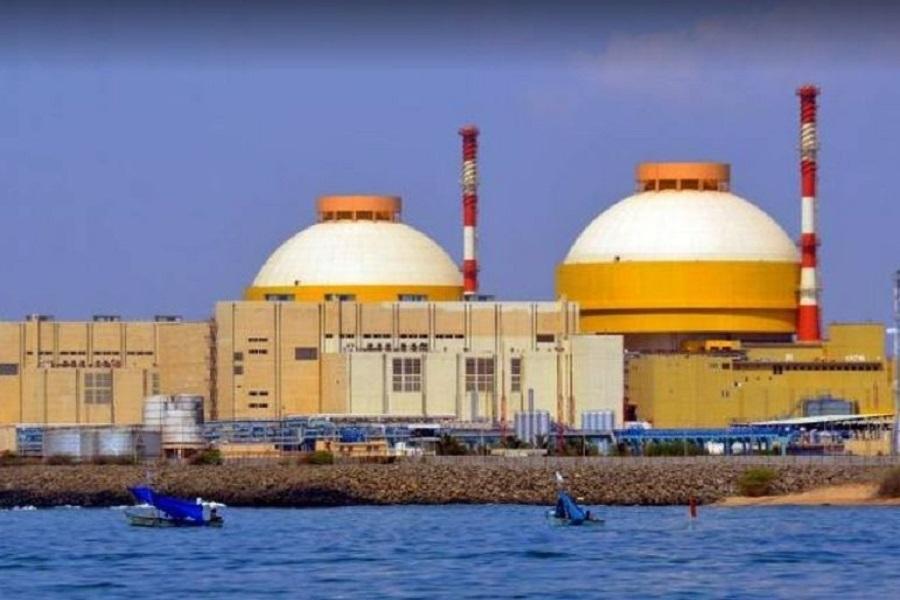
Centre Reviews 100 GW Nuclear Mission to Boost Clean Energy Goals
The Indian government has taken a significant step towards achieving its ambitious target of expanding the country’s clean energy basket and reducing carbon footprint. Union Power Minister Manohar Lal Khattar and Minister of State for Atomic Energy, Dr Jitendra Singh, recently convened a high-level meeting to review the 100 GW Nuclear Energy Mission. The meeting follows up on Prime Minister Narendra Modi’s vision of making India a global leader in clean energy and reaffirms the country’s commitment to achieving Net Zero emissions.
The 100 GW Nuclear Energy Mission is a key component of India’s efforts to transition to a low-carbon economy. The mission aims to increase the share of nuclear energy in the country’s energy mix, reduce dependence on fossil fuels, and mitigate the impact of climate change. The review meeting provided an opportunity for the government to assess the progress made so far, identify challenges, and outline key directives to achieve the ambitious target.
Key Directives to Achieve the 100 GW Nuclear Energy Mission
During the meeting, the government outlined several key directives to achieve the 100 GW Nuclear Energy Mission. Some of the key takeaways include:
- Capacity Addition: The government plans to add 12,000 MW of nuclear capacity by 2031, with a focus on indigenization and self-reliance.
- Technology Upgradation: The government has directed nuclear power plants to upgrade their technology to improve efficiency, reduce waste, and enhance safety.
- Waste Management: The government has emphasized the need for effective waste management, with a focus on dry storage and processing of nuclear waste.
- Human Resource Development: The government has stressed the importance of developing human resources in the nuclear sector, with a focus on training and upskilling of nuclear personnel.
- Public Perception: The government has acknowledged the importance of public perception and has directed nuclear power plants to engage with local communities, address concerns, and promote transparency.
- International Cooperation: The government has emphasized the need for international cooperation and collaboration to achieve the 100 GW Nuclear Energy Mission.
Challenges and Opportunities
Despite the progress made, the 100 GW Nuclear Energy Mission faces several challenges. Some of the key challenges include:
- Funding: The mission requires significant investment, which may be a challenge for the government.
- Public Perception: The nuclear sector faces public skepticism, which can impact the achievement of the mission.
- Regulatory Framework: The mission requires a robust regulatory framework to ensure safety, security, and environmental sustainability.
- Human Resource: The mission requires skilled and trained human resources, which can be a challenge in the current scenario.
However, the mission also presents several opportunities. Some of the key opportunities include:
- Job Creation: The mission can create new job opportunities in the nuclear sector.
- Economic Growth: The mission can boost economic growth by reducing dependence on fossil fuels and promoting clean energy.
- Climate Change Mitigation: The mission can help India achieve its climate change mitigation goals.
- Energy Security: The mission can enhance energy security by reducing dependence on imported fuels.
Conclusion
The review meeting on the 100 GW Nuclear Energy Mission is a significant step towards achieving India’s clean energy goals. The government’s commitment to the mission is a testament to its vision of making India a global leader in clean energy. The mission presents several challenges, but it also presents opportunities for job creation, economic growth, climate change mitigation, and energy security.
As India continues to grow and urbanize, the demand for energy is expected to increase. The 100 GW Nuclear Energy Mission can help meet this demand while reducing the country’s carbon footprint. The government’s focus on indigenization, technology upgradation, and public perception can help build trust and confidence in the nuclear sector.
As the world moves towards a low-carbon economy, India’s 100 GW Nuclear Energy Mission can play a key role in achieving this goal. The mission can help India become a global leader in clean energy and cement its position as a responsible and sustainable energy player.






